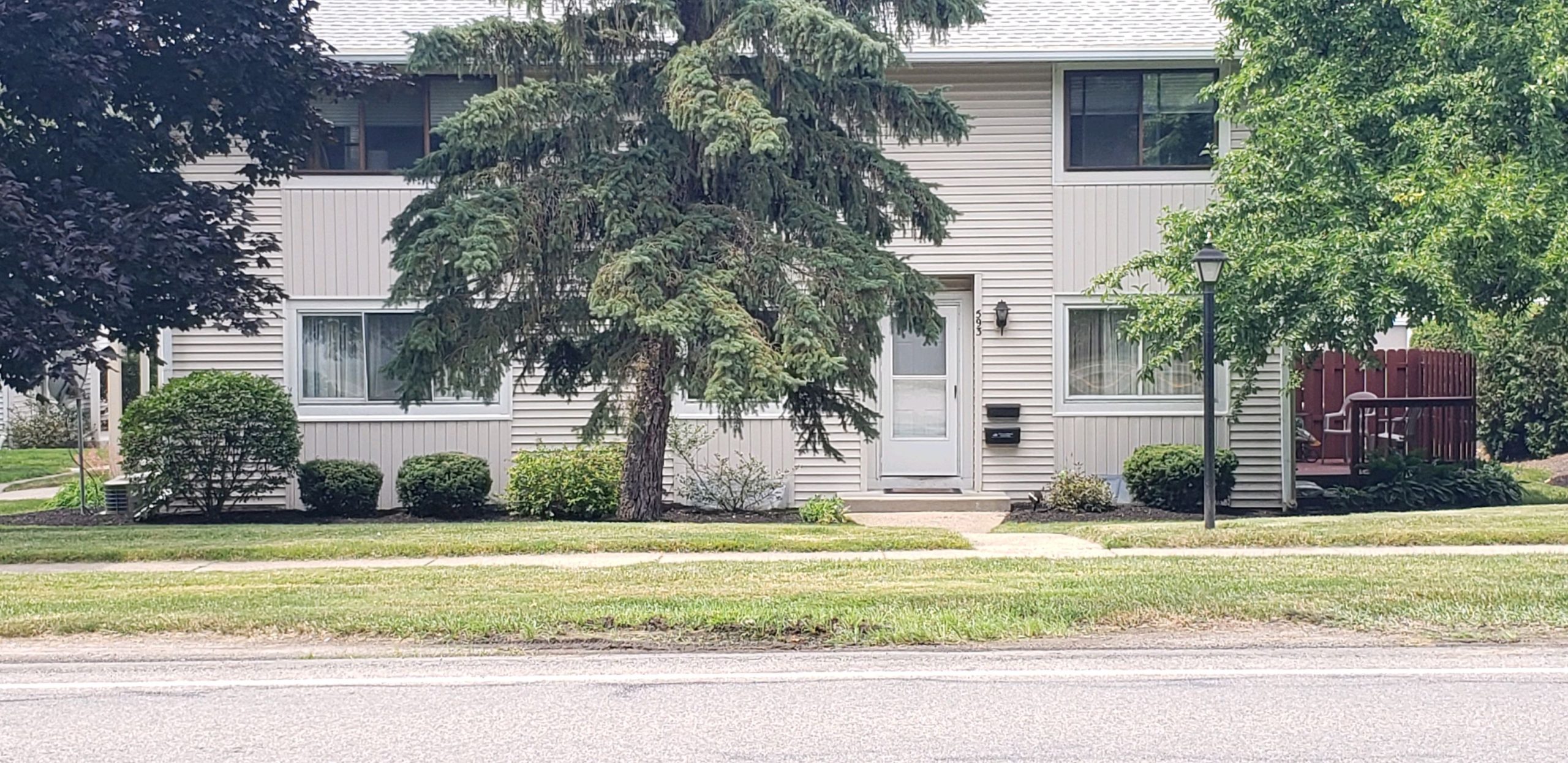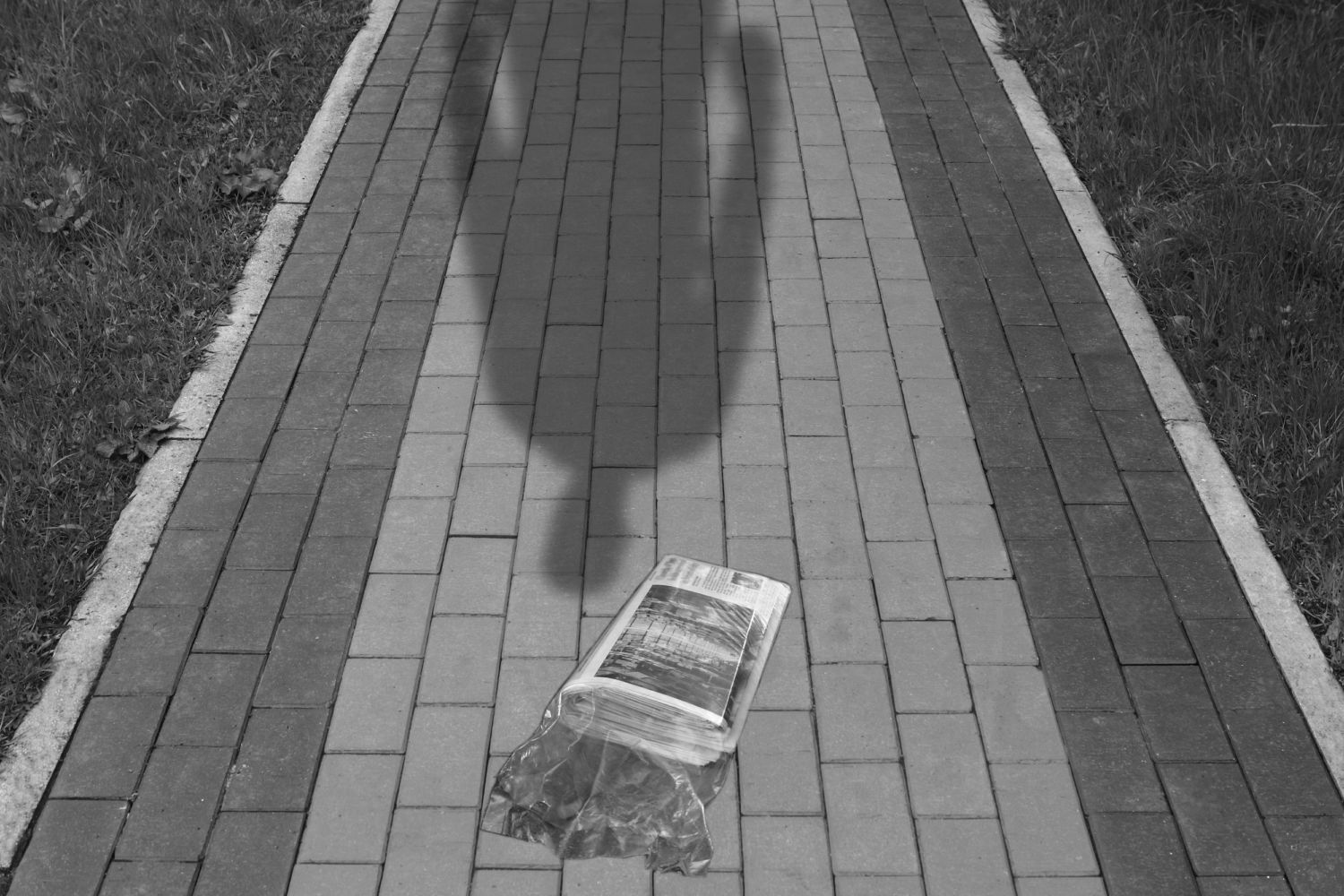This story contains descriptions of sexual assault.
The life of Rick Bates, 50, has unfolded in the shadow of the sexual abuse he experienced for nearly a year as an 11- and 12-year-old paperboy in the 1980s for the Democrat and Chronicle in Brighton, a suburb of Rochester, New York.
Eager to help his mom, who was raising two boys alone, he delivered a stack of D&C papers each morning around his condo complex. But the job turned into a nightmare, Bates said, when his paper route manager, Jack Lazeroff, began to repeatedly abuse him during their weekly meetings at Bates’ house, escalating the abuse to oral sex. Bates didn’t tell anyone at the time. As an adult, he turned to the bottle for healing, and made plans to end his life.
For more than four decades, Bates was haunted by the horror of the abuse without a path for recourse. In 2018, after reading a story in the D&C about sexual abuse in the Catholic Church, Bates reached out to a reporter from the paper with his own story. In his email to David Andreatta, then a D&C columnist and investigative reporter, Bates wrote that he had been sexually abused by a former D&C employee and suggested that the paper should investigate further.

The condo complex where Rick Bates lived and delivered copies of the Democrat & Chronicle in the 1980s. (Courtesy: Rick Bates)
When he didn’t hear back from the reporter, his hope waned. Instead, Dave Harmon, a human resources manager from Gannett, reached out to Bates a few days later. Over the course of several phone conversations, he tried to empathize and offered help finding a psychiatrist, Bates said. But no actionable steps followed.
Three weeks later, an email from Gannett’s corporate offices put Bates on the brink of a breakdown. In the letter, Michael Kane, chief operating officer of local markets at Gannett, wrote that “despite diligent inquiry,” the company has not found any record of sexual misconduct complaints or allegations against Lazeroff.
The company contacted several employees, he wrote, including circulation department managers who worked at the paper around the time Bates worked as a paperboy, and didn’t find anyone who recalled complaints or was aware of allegations against Lazeroff.
“Unfortunately, while we have no reason to doubt your honesty, the passage of nearly four decades makes it impossible to independently verify your claims,” the letter said. In light of this, they were “closing-out this matter,” Kane wrote.
The response almost destroyed Bates, he said. In the days after, he contemplated suicide. “I couldn’t see a way through it, it got so dark for me,” Bates said. “I thought I would have no opportunity to fight back and get justice.”
But the lifting of the statute of limitations under the Child Victims Act, signed in New York in February 2019, offered Bates hope, and a path forward. He retained a lawyer and eventually filed charges against Lazeroff with Brighton Town Police. “It was a turning point in my life to be able to go back and, in my mind, fix what I couldn’t fix when I was 11,” Bates said.
In October 2019, Bates filed a lawsuit against the D&C and Gannett, seeking unspecified civil damages. Andreatta, who by then left the D&C to become the editor of the Rochester City Newspaper, broke the news about Bates’ lawsuit and allegations against Lazeroff on the day the lawsuit was filed. Steven Orr, a longtime reporter at the D&C who has since retired, also wrote about Bates’ lawsuit. Both reporters waited for Bates’ lawsuit to be filed before publishing the story. The D&C and City covered subsequent paperboy complaints, except allegations by two survivors who came forward most recently.
Complaints against Gannett
Publishing giant Gannett is facing lawsuits filed by 11 former paperboys who have accused employees of Gannett-owned newspapers of sexually abusing them on the job in the 1970s and 1980s.
Nine of the former paperboys filed complaints between 2019 and 2021 against Gannett’s D&C under the CVA, a New York law that extended the statute of limitations for survivors of sexual assault, enabling them to file criminal charges against their abusers during a two-year lookback window.
The lawsuits allege that the D&C failed to protect the paperboys from being sexually abused by former circulation manager Jack Lazeroff, who held the job in the 1980s and supervised numerous paperboys. He died in 2003. The complaints also allege that the D&C negligently hired Lazeroff after he was fired from a previous job at a bank where he was seen through office windows sexually abusing high school boys who were applying for student loans.
One of the paperboys accused a second D&C employee of molesting him. That employee restocked newspaper vending machines for Gannett in Rochester in the 1980s (the employee is unnamed in the lawsuit because the plaintiff couldn’t recall his name).
“Despite the fact that Defendants knew or should have known that Plaintiffs were in danger of being sexually abused by their employees, including Lazeroff and the Unnamed Employee, the Defendant failed to take reasonable steps to protect them from that danger,” states one of the complaints filed by the Marsh Law Firm, which represents eight former D&C paperboys. “The Defendant negligently hired Lazeroff and the Unnamed Employee then failed to properly supervise them. The Defendant permitted Lazeroff and the Unnamed Employee unfettered and unsupervised access to Plaintiffs and other young children, failed to address sexual abuse that was occurring by multiple perpetrators in plain sight, and exposed Plaintiffs to danger.”
The paperboys’ complaints in New York are part of nearly 10,000 lawsuits that have been filed under the Child Victims Act, which opened the floodgates for lawsuits against the Catholic Church and the Boy Scouts. Neither Gannett nor the D&C has publicly commented on the paperboys’ cases, which have been covered by the Rochester City Newspaper and the D&C itself. In its court responses to the complaints, Gannett denied the allegations of sexual abuse or having sufficient knowledge to form a belief about the claims. Gannett has declined to comment for all stories about the case, including this one. The cases are in the process of discovery.
Under a similar law in Arizona, two former paperboys sued the Gannett-owned Arizona Republic in December of 2020, accusing two former sales managers in the circulation department — James Allen Robertson and his superior Robert John Bresee — of egregious acts of sexual abuse in the 1970s. The paper was then owned by Central Newspapers, Inc., which was purchased by Gannett in 2000. The Arizona cases are in early litigation, according to the former paperboys’ attorney John Charland of the Charland Law Firm.
Paperboy’s quest to keep Gannett accountable
Bates sent his initial email to the D&C in September 2018. It took five months for the reporter to contact him and nearly a year for the story to be published. Bates questions whether Gannett’s concerns about its liability influenced the timeline of how the reporting unfolded.
“There is a mountain of evidence against the D&C and Gannett in terms of what Lazeroff did to me and many other boys,” Bates said. “I’m really frustrated by the amount of time it’s taken. The way that they approached and followed up with me prior to the CVA being passed was hugely detrimental to my health.”
In Bates’ email to Andreatta, he copied Karen Magnuson, a former D&C editor who took early retirement in January 2019. Magnuson told Andreatta to put his reporting on pause, she said, and brought the email to the attention of Gannett’s human resources to conduct their own investigation into Lazeroff. Andreatta said Magnuson told him to hold off on responding to Bates while Gannett verified the allegations.
“At the time there was little to go on, because the alleged incident happened in the ’80s and the accused was no longer alive,” she said.
But Bates’ story nagged at Andreatta, he said, and along with a colleague, he began quietly looking into the allegations anyway. In contrast to the response Bates received from Gannett, the reporters began finding evidence that supported Bates’ story and showed that he might have not been the only victim.
Lazeroff, a district manager in the circulation department in the 1980s, met with the boys weekly, often on weekends, to go over paper routes and to collect money from them. A former circulation employee who emailed reporters with a tip to investigate Lazeroff said that he saw a paperboy sitting in a reclined passenger seat of Lazeroff’s car in tears. Another former D&C circulation employee witnessed an outraged parent of a paperboy accusing Lazeroff of sexual abuse. One of the paperboy’s fathers told Andreatta he complained to the managers.

The shed where Rick Bates picked up newspapers as a paperboy in the 1980s. (Courtesy: Rick Bates)
Reporters also located police reports and court records. A 1987 police report detailed Lazeroff’s encounters with young boys in a doughnut shop, where, according to Orr’s story, he touched them inappropriately in plain sight. Lazeroff’s former colleague at the First Federal Savings and Loan Association of Rochester, where he managed student loans prior to working at the D&C, told reporters he had molested boys there and was fired after complaints. Reporters found he was arrested twice in the late 1980s and pleaded guilty “to a disorderly conduct violation” in 1989, according to records mentioned in the D&C and City coverage. Lazeroff was eventually fired from the D&C.
Magnuson said the D&C was going to pursue the story after Bates first reached out to the D&C.
“If the reporters dug up facts that made the company look bad, we were still going to report that,” she said.
She said Gannett had no editorial influence on the story D&C published. However, the reporters were not given a green light to pursue the story until January 2019 — when a new D&C editor came on board, about a month before the CVA was signed into law.
In an email, Orr wrote to Bates that they’ve tried to “keep a wall between our newsroom and the corporate office on this story.” Orr asked Bates for the letter he received from Gannett management in 2018, stating he wanted to avoid reaching out to Gannett (although the story claims that the letter was provided by Gannett). Orr told Bates in an email, however, that Gannett wanted its libel lawyer — who was not involved in defending the case — to read the story before publication, according to an email Orr sent Bates.
In Steve Orr’s almost 40-year career at the D&C, the circumstances behind reporting on the paperboys case were unprecedented, Orr said. “I knew that anything that we found could be made public and could be used by people suing the newspaper or on the flip side, could also be used by the newspaper in their legal defense,” he said.
The reporters pursued the story as they would any story about a former employee of an institution, Orr said. “It’s certainly different to be calling your own corporate office, and asking them to comment on this,” Orr said.
The reporting by Orr and Andreatta appears in complaints filed by the Marsh Law Firm on behalf of the victims. “It really was as a result of the journalism that we have so much corollary evidence,” said James Marsh, who represents eight former paperboys, seven of whom are victims of Jack Lazeroff. “We almost never have the quotes, the sources and people that become manifest in our complaints.”
Other victims come forward
The coverage of Bates’ story spurred more survivors to come forward. Since Rick’s story was published, eight more former D&C paperboys have accused Lazeroff, their former circulation supervisor, and another “unnamed” employee of sexually abusing them on the job.
Ballard Tackett, another victim of Lazeroff, read Bates’ story online, and reached out to the same law firm. The trauma of the childhood abuse had changed the course of his life, he said. “My life could have been different had a couple things gone differently, and this is one of them,” he said. “I’d like to see those who might have known and could have stopped it after the first signs be held responsible.”
In an eerily similar case in Arizona, two former paperboys who worked for The Arizona Republic in the 1970s (previously The Arizona Republic/Phoenix Gazette) allege sexual abuse by two circulation managers who supervised them. The lawsuits filed by the Charland Law Firm allege that two managers, Robertson and Bresee, operated a pedophile ring called “The Group,” and groomed young boys into prostitution, pornography and egregious sexual acts, according to the complaints.
Robertson, who along with Bresee was convicted in 1980, had admitted to molesting around 35 boys ages 7 to 10. Ten of them were The Republic/Gazette paperboys, according to the Phoenix New Times 1980 article. The article also states that in his seven years of employment at the paper, he was periodically transferred from one office to another. “We do know that there were communications and complaints made to certain managers, specifically in the circulation department,” said John Charland, who represents the two survivors in Arizona.
Moving forward
Laura Ahearn, the attorney who represents Bates, says that the case displays a familiar narrative, one in which a predator seeks out a position that allows them to be unsupervised and commit assault.
“This (case) is consistent with our cases of institutional abuse, where individuals are in positions of trust, and those institutions are failing to ensure that the very individuals they work with, those children, are protected,” said Ahearn. “In the end the objective is to obtain justice for them, and we are moving in that direction.”
A typical trajectory for child sexual abuse cases is three to five years, according to Marsh.
For Bates, the money is only a small part of the justice he’s fighting for. “I want them to say, yes, this happened. I don’t want them beating around the bush,” Bates said.
Bates reached out to state legislators to advocate for laws like the CVA in other states and would like to see Gannett cover these laws and the victims that come forward.
The lookback windows for filing child sexual abuse lawsuits have closed in New York and Arizona. In California child sexual abuse survivors have until 2022 to file claims, and other states are considering similar laws. Maine and Vermont removed the limits on statutes of limitations altogether.
“There are people like me who have no recourse,” Bates said. “And the damage that can do to people is incredible.”







